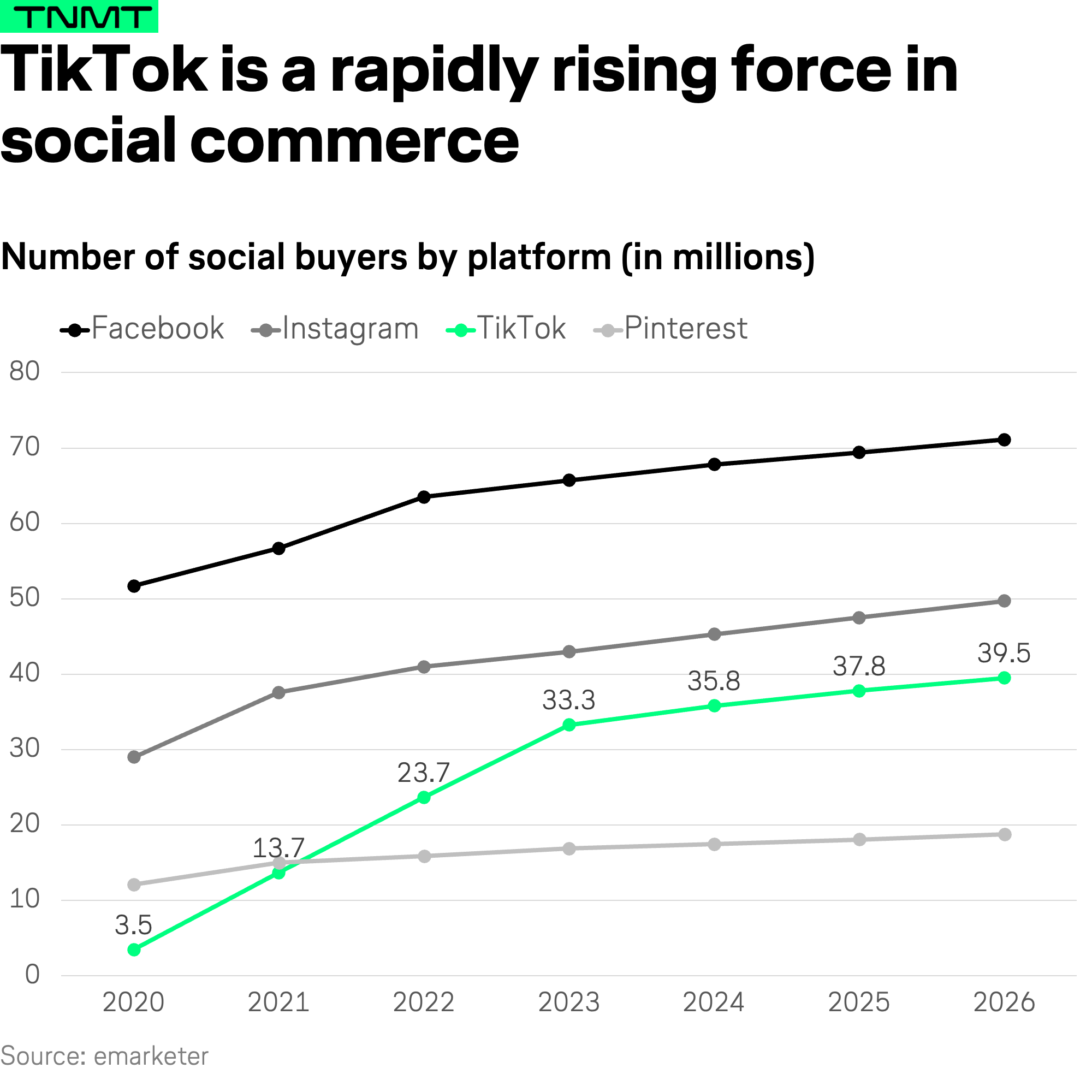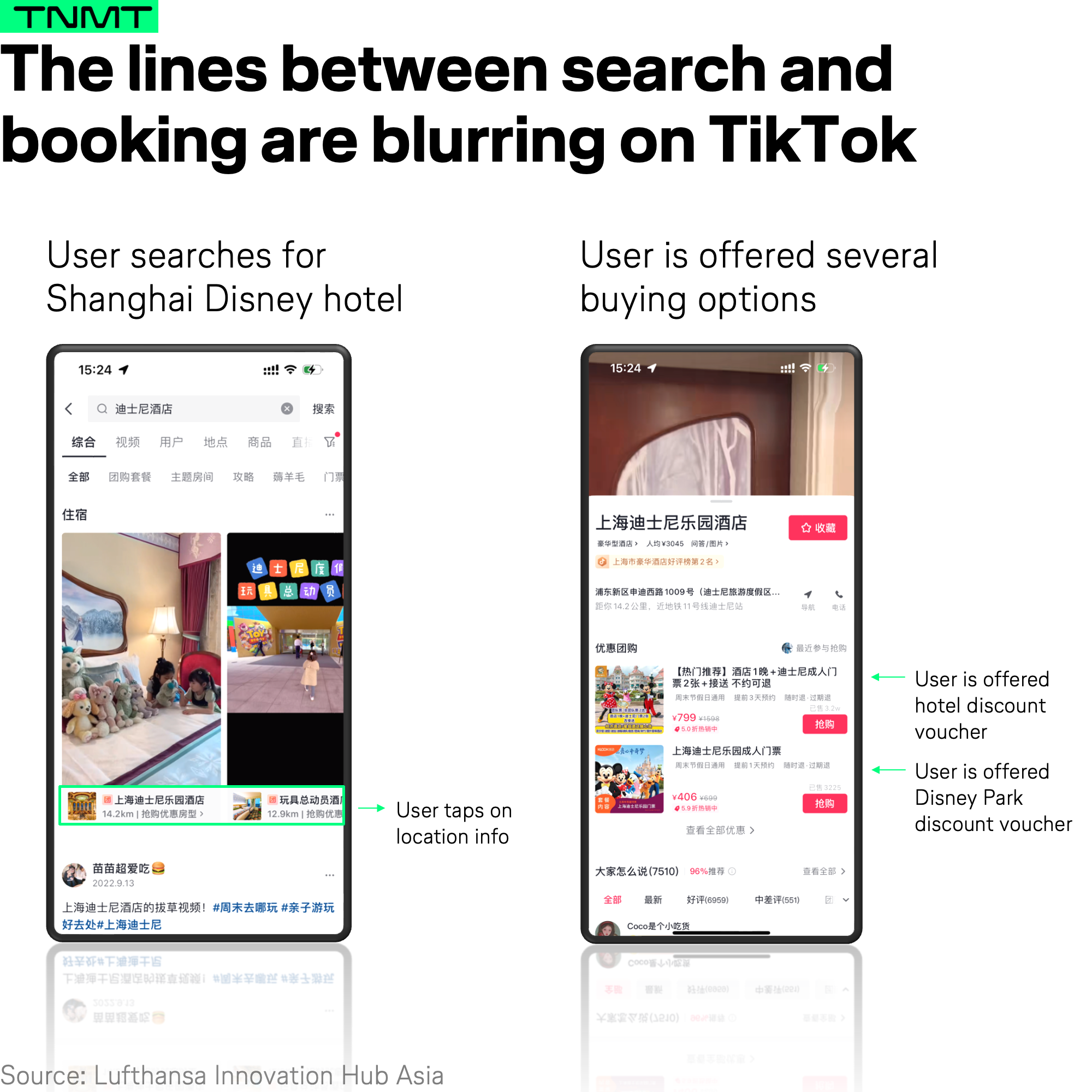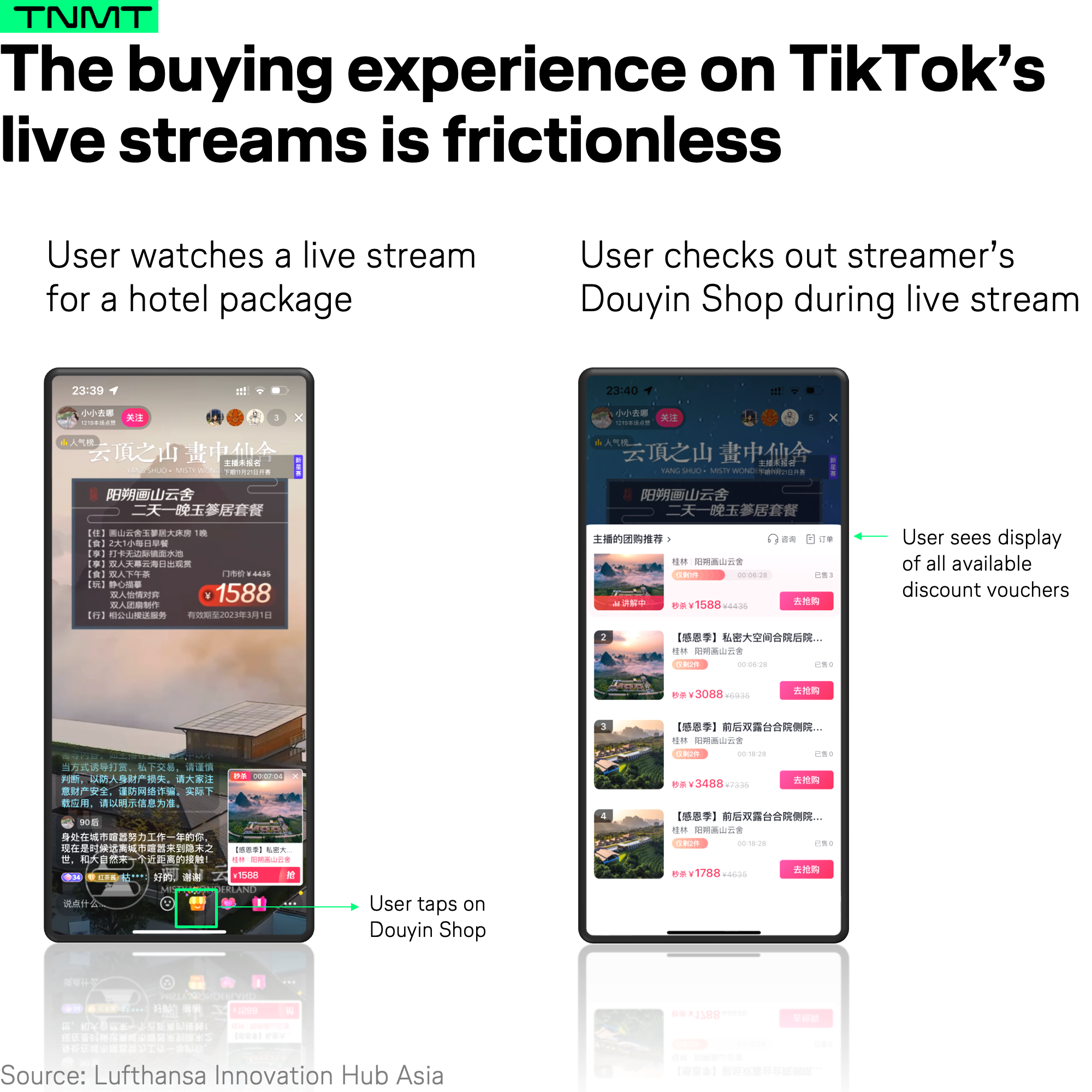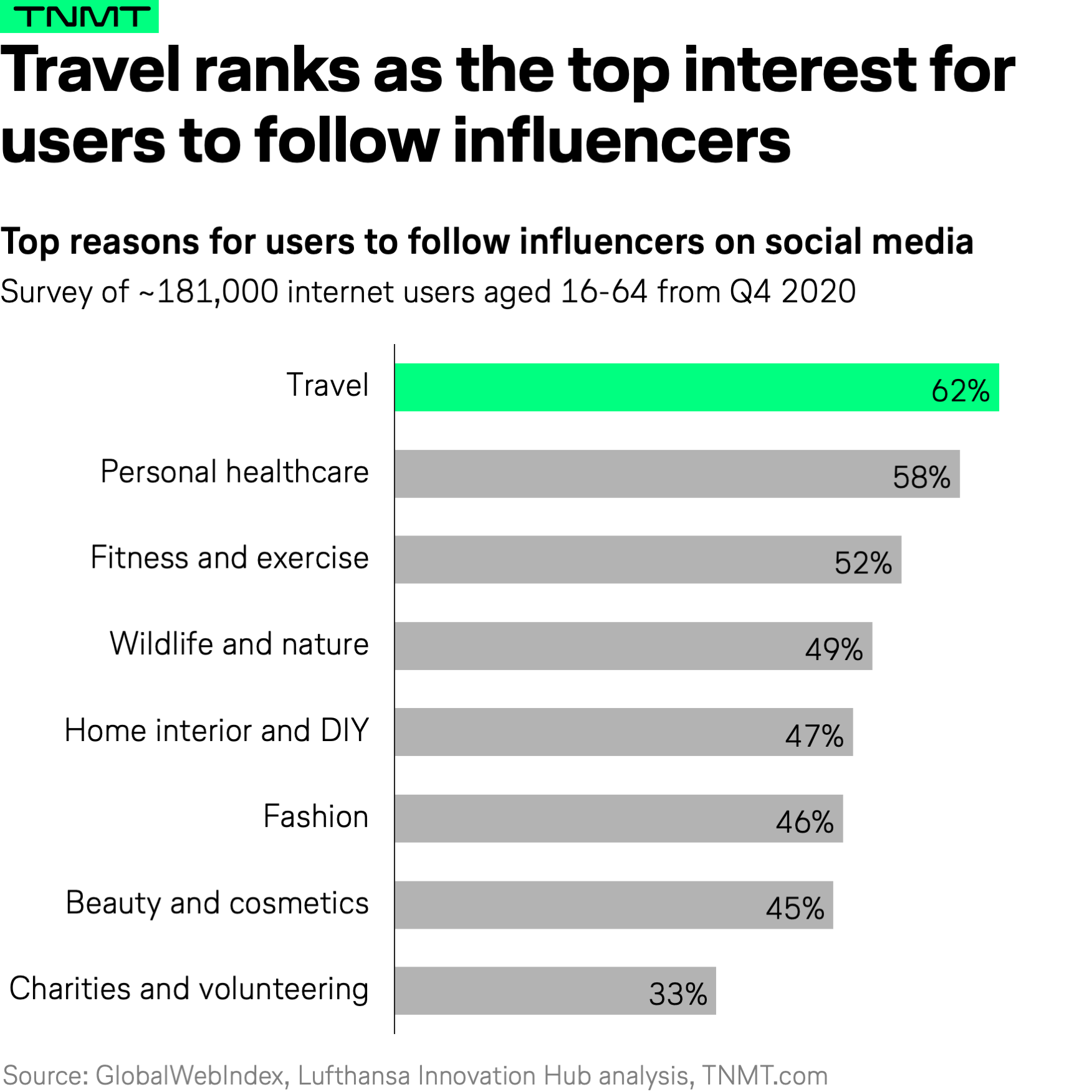Welcome back to our unfolding exploration of the transformative shifts in the travel sector, which we have coined “The Great Inversion.”
If you’re joining us for the first time, you might want to catch up on Article #1, “Communities Define Demand,” and Article #2, “Advanced Means.”
Today, we delve deep into our third core trend, aptly named “Embedded Travel.”
Embedded Travel is not just a fancy buzzword. It crystallizes a pivotal movement in the travel landscape, propelling travel transactions beyond the confines of traditional industry channels such as airline websites or online travel agencies (OTAs).
Instead of being limited to these specific platforms, travel booking is becoming omnipresent, seamlessly woven into our everyday digital experiences.
This emergence is rooted in two foundational shifts:
- Firstly, a palpable demand from modern consumers for a streamlined travel booking experience. Gone are the days when planning a trip meant juggling multiple apps or websites. Today’s traveler craves inspiration, planning, and booking all in one place, without the constant platform switching.
- Secondly, the birth and rapid evolution of technologies that make this unified experience possible. These innovations have not only enabled travel bookings to be inserted into non-travel platforms but also blurred the lines between travel inspiration, planning, and booking.
This dynamic presents a new frontier for travel brands and how they should think about distribution.
If you control the nascent stages of a traveler’s journey, meaning that initial spark of inspiration, you’ve likely won not just a sale, but loyalty.
Does this sound like a theoretical concept to you?
Let’s be more specific. A testament to the “Embedded Travel” trend is the burgeoning integration of travel inspiration and booking on social media platforms.
- Platforms like TikTok, Instagram, and emerging social channels are not just passive sources of wanderlust anymore.
- In regions such as the US, UAE, and Saudi Arabia, they’ve evolved into formidable marketplaces for travel products and services. This is one of the reasons why we have repeatedly argued that travel brands should be obsessed with platforms like TikTok.

To truly unpack the nuances of Embedded Travel, let’s delve deeper into its three pivotal sub-trends, each a vital piece completing the Embedded Travel puzzle.

1. The rise of Travel-as-a-Service (TaaS)
The digital age has seen the introduction of Travel-as-a-Service (TaaS), a powerful construct that enables the omnipresence of travel booking capabilities across platforms including non-travel applications and websites.
The essence of TaaS lies in the seamless and effortless integration of booking tools across various platforms. But how is this integration made so fluid? Enter B2B white-label solutions, orchestrated through API connections, which are making it all possible.

These solutions are the brainchildren of both traditional travel industry behemoths and a burgeoning population of travel-tech startups.
Let’s briefly deep-dive into the different kinds of TaaS providers shaping today’s market.
On the one hand, we have online travel giants like Expedia and Hopper that have harnessed their established infrastructure, reimagining it for third-party integrations (and building significant B2B business through this).
- Expedia’s OpenWorld Platform, for example, offers a comprehensive e-commerce toolkit including a plethora of features from processing payments to managing customer interactions, enabling other brands to amplify or kickstart their platforms into the travel domain.
- The Hopper Cloud is leveraged by renowned travel brands including Kayak, Marriott, and Trip.com and seamlessly integrates Hopper’s unique blend of fintech and travel agency products via a white-label portal into their existing booking platforms.
On the startup front, we also increasingly witness new TaaS companies like OneTwoTrip or Appboxo, which are ushering in the TaaS movement.
- Appboxo, for example, is offering a white-label solution that facilitates businesses in extending travel booking capabilities under its umbrella brand. The offerings span flights to various other travel essentials.
- OneTwoTrip is a Russian prodigy that provides a customizable booking engine for other non-travel businesses, interfacing effortlessly with existing systems. For example, OneTwoTrip collaborates with insurance companies, rendering an expansive travel product suite.
The brilliance of these TaaS entities lies in their capability to deliver a rich travel booking experience without mandating businesses to invest heavily in their own technology and infrastructure. They bring to the table turnkey solutions that easily meld with existing software applications, allowing companies to enrich their primary services with an expansive travel palette.
In the realm of white-label TaaS solutions, there’s no shortage of takers.
The allure of these solutions isn’t confined to travel-centric businesses. In fact, companies from entirely different sectors, especially from the financial domain, are making strategic inroads into the travel industry, aiming to harness the perennial travel demand to strengthen their core offerings. Their motivations are clear: capitalizing on travel to enhance customer engagement and bolster brand loyalty.
Consider these compelling instances:
- Capital One’s Strategic Embrace of TaaS: As of March 2021, Capital One announced its alliance with Hopper Cloud. By September of the same year, it had seamlessly integrated Hopper’s robust capabilities, giving birth to Capital One Travel and Premier Collection. This innovative move presented Capital One Venture X cardholders with an exclusive marketplace teeming with premium hotels and resorts.
- Citibank’s Travel Portal Takes Flight: Leveraging Booking.com’s expansive supply, which boasts an impressive 1.4 million hotels globally, Citi recently unveiled its fresh travel portal. Powering this venture is the technology from Rocket Travel by Agoda, a brand under Booking Holdings’ extensive portfolio.
- Exclusive Perks for American Express Cardholders: In a bid to cater exclusively to its cardholders, American Express joined hands with GetYourGuide. The result: A dedicated booking platform featuring a plethora of tours, activities, curated experiences, and special discounts.
The emerging trend is unmistakable: Non-travel enterprises, especially those in the financial sector, are leveraging the travel industry’s vast potential as a tool to reinforce customer loyalty.
This ever-expanding influence of white-label TaaS solutions is undeniably transformative, making the process of travel booking more ubiquitous and accessible than ever before.
2. Bookable content as the nexus of social media
In the ever-evolving travel industry, the confluence of social media platforms and online booking is fostering an unprecedented trend: the rise of bookable content.
This symbiotic relationship has allowed users to seamlessly transition from a casual browsing experience to active travel booking, all within the confines of a social media app.
If there’s a torchbearer of this burgeoning trend, it’s undoubtedly TikTok, along with its Chinese counterpart Douyin. Beyond being mere entertainment hubs, these platforms are revolutionizing the way users engage with and book travel content.
How exactly? Let’s take a closer look.
Massive user engagement
As one of the most addictive social apps, TikTok’s significant user base, especially in Asia, places it at a prime position to exploit its e-commerce capabilities. The groundwork laid by Douyin in China only reinforces the anticipations surrounding TikTok’s foray into integrated e-commerce, making travel bookings even more streamlined.

Rich video content
Douyin’s features offer an enticing glimpse of what TikTok in the West might have to offer soon. Short-form videos on Douyin not only entertain but also enable users to discover hotels, attractions, and even secure bookings.
Whether it’s exploring reviews, and amenities, or purchasing discounted vouchers, users find it all without exiting the app. Integration with hotel OTA suppliers further amplifies this ease, allowing users to confirm bookings on specific dates instantaneously.

The power of live streams
Douyin’s impressive sales figures, clocking in a whopping 10 billion products from May 2020 to April 2021, attest to the potency of live streaming. With GMV surging 320% year-on-year, the platform has set an example for how live interactions can spur impulse purchases.
For travel brands, this method has proven invaluable. Live-streams cater to price-sensitive travelers by offering attractive discounts. The time-sensitive nature of these streams, combined with host interactions, nurtures impulse bookings. Furthermore, these live interactions are an invaluable avenue for brands to build a loyal and engaged customer base.

The rise of bookable content isn’t just reshaping the travel industry; it’s setting the stage for the next big wave: the creator economy.
As travel content becomes increasingly bookable, individual creators will hold unprecedented power in shaping travel trends, influencing decisions, and directly profiting from their content.
The future is not just about where you travel, but who influences you to make that journey.
With this being said, let’s focus on our third and final key driver for Embedded Travel.
3. The Creator Economy supercharges Embedded Travel
Recent times have marked the meteoric rise of the creator economy intertwined seamlessly with “social commerce.”
This vast, burgeoning ecosystem comprises independent content creators, influencers, and prosumers who monetize their digital footprints. These digital trailblazers, through varied means such as sponsorships, subscriptions, affiliate links, and other marketing techniques, have managed to carve a niche that today is estimated to be over $100 billion USD, with the influencer marketing sphere alone accounting for $13.8 billion USD.
The growth trajectory of this economy is largely propelled by the public’s appetite for influencer insights, and travel stands out as a prime focus. The astounding fact that Americans alone dedicated 176 hours in 2020 to scouring social media for travel inspiration underlines the undeniable clout of this digital phenomenon.
The transformative influence of creators on travel
The profound impact of the creator economy on societal aspirations cannot be understated. In a telling reflection of our times, three times more American children now dream of becoming YouTube influencers than astronauts. This massive shift highlights the creator economy’s irresistible pull.
Travel, in particular, has witnessed a tidal wave of attention on social media and the creator community. Data from GWI suggests that travel content is the leading driver for the followership of influencers, with a whopping 62% indicating their predominant interest in this domain.

These digital nomads, the travel influencers, have seamlessly transitioned into being people’s trusted (virtual) travel advisors.
Their content, characterized by authenticity and relatability, has secured an unwavering trust, with 84% of their followers viewing their travel content as credible recommendations.
Leveraging the Creator Economy: Case in point
In theory, this creates a potential goldmine for travel brands.
Both the supply side, where an increasing number of individuals are becoming content creators, and the demand side, where consumers exhibit a strong affinity for travel-related content, offer ripe opportunities for capitalization.
However, powerful content-creator plays by major travel brands are still relatively rare.
- EasyJet’s “Look and Book” initiative stands as a testament to the untapped potential of combining travel with the creator economy.
- This feature, which allows passengers to initiate a booking using an Instagram screenshot, is a masterstroke in recognizing and harnessing the power of visual content in travel decision-making.
Yet, while some brands like EasyJet pioneer this synergy, many in the travel realm, especially airlines, seem hesitant to fully embrace social media-centric campaigns.
This hesitation can be attributed to a myriad of reasons, including potential risks associated with influencer tie-ups, absence of coherent strategies, or a perceived disconnect between brand values and influencer narratives.
Startups at the confluence of creation and travel
As the creator economy continues its ascent, the intersection with the travel industry is becoming a hotbed for innovation. Startups are mushrooming at this crossroads, aiming to fuel content creation while bridging the gap between these digital influencers and travel brands.
These ventures stand poised to redefine how we perceive travel, seek inspiration, and eventually make travel decisions.
The following mapping showcases some of these digital frontrunners.

In wrapping up, the confluence of the creator economy and travel, if harnessed adeptly, could reshape the contours of the travel industry.
By forging meaningful collaborations with influencers and tuning into the resonance of their audience, travel entities can unlock a treasure trove of opportunities.
The onus now lies with these brands to navigate this brave new world, capitalizing on the trust and engagement influencers have painstakingly built.
What’s still to come
Embedded Travel is revolutionizing our digital landscape, intertwining TaaS, social media, and the Creator Economy.
As we’ve navigated these facets, the blurring boundaries promise a more integrated travel experience.
And as we anticipate trends 4 and 5 of The Great Inversion, it’s evident our journey of discovery is far from over. Stay tuned for more.




